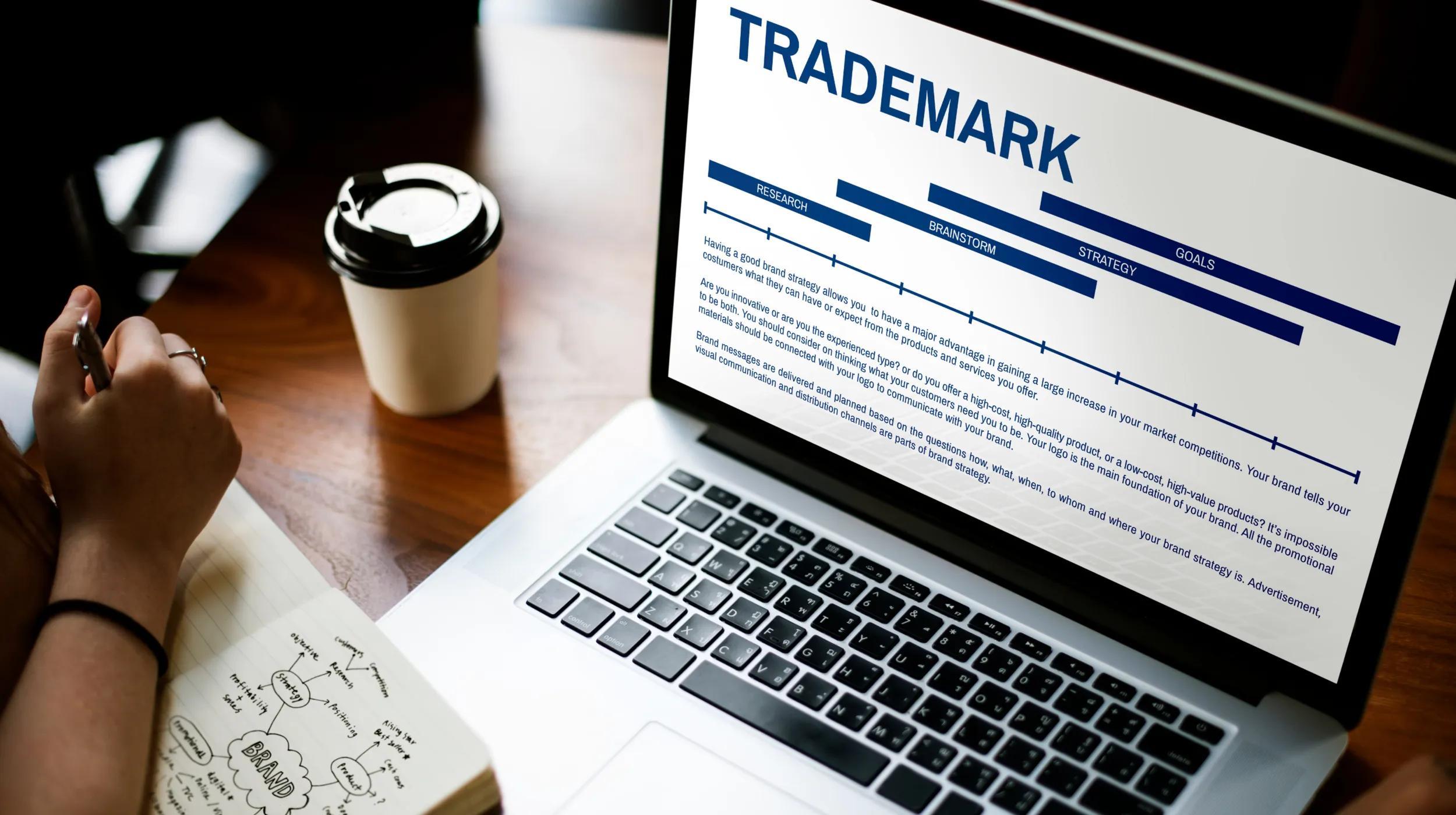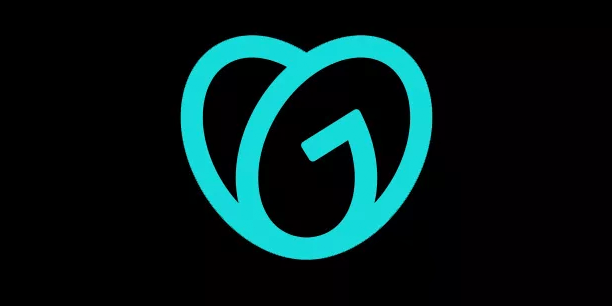Key takeaways
- Do thorough trademark research before committing to any branding elements. This can save you from legal trouble, wasted investment, and brand confusion down the road.
- Free, official databases like USPTO’s TESS, WIPO, and EUIPO make it easy to see if your name, logo, or slogan is already in use.
- Keep monitoring your trademark after registration to maintain your rights and safeguard your brand as you grow.
So, you’ve come up with the perfect branding. It’s catchy, memorable, and feels like the start of something big. Before you start printing business cards or snagging that domain, there’s one thing you need to know: Is the name already taken?
Many businesses trademark their names to protect their brands, and you might be surprised to learn how crowded the trademark landscape really is. As of mid-2025, the United States Patent and Trademark Office (USPTO) lists more than 3.4 million active trademarks. That means running a quick trademark availability check now could save you time, money, and a lot of frustration later.
Let’s go over how to check trademark availability in the U.S. so you can lock down a brand name that’s truly yours.
Why thorough trademark research matters in 2025
Your branding is the foundation of your business identity. Taking the time to research trademarks before you launch helps protect that identity from the start. When you know a name is available, you can build your website, logo, and marketing around it with confidence.
The reality is that trademark activity is rising fast. In 2025, the number of trademark applications continues to climb as more entrepreneurs stake their claim in an increasingly crowded marketplace. That growth means a higher chance of overlap and a greater risk of infringement or legal disputes.
What is a trademark?
A trademark is how you legally protect your business name and the unique elements that make your brand recognizable. It’s the name, logo, slogan, or design that tells the world your product or service is yours, not someone else’s.
Legal definition and types
Under U.S. law, a trademark is defined as any word, phrase, symbol, design, or combination of these that identifies and distinguishes the source of goods or services. In other words, it’s what sets your brand apart. There are two main types of trademarks:
- Registered trademarks are those officially recorded with the U.S. Patent and Trademark Office (USPTO). Registration gives you exclusive nationwide rights to use that mark and makes it easier to enforce your ownership.
- Unregistered trademarks, also known as common law trademarks, are protected through regular business use, but only within the geographic area where they’re recognized. These offer limited legal protection compared to registered marks.
Related: Understanding trademark symbols
Word marks
This trademark category protects the text elements of your brand. This could include things like your company name, product name, or slogan. Think of “Nike” or “Just Do It.”
Design marks
Design marks protect visual elements such as unique design elements, icons, or stylized text. Trademarked logos give your brand personality and make it stand out in a sea of competitors.
Sound marks
Sound marks protect audio elements that instantly remind people of your brand. Think of the deep roar of the MGM lion, the three-note NBC chime, or the catchy Intel “bong” sound. These sounds are legally trademarked because they’re so closely tied to their brands’ identities.
Combination marks
These trademarks blend text and design elements, like a business name and logo. They offer the broadest coverage for brand assets.
Why you shouldn’t skip doing comprehensive trademark research
Skipping trademark research might save a little time up front, but it can cost you a lot more later. A quick search today can prevent serious legal, financial, and reputational trouble down the road.
Legal risks
Trademark disputes are more common than you might think. In fact, there are about 3,000 trademark infringement lawsuits filed each year in the U.S. If you launch a brand using a name that’s already trademarked, you could receive a cease-and-desist letter or end up in court. Even if it’s an honest mistake, defending yourself against infringement claims can be expensive and time-consuming.
Financial risks
Imagine paying for logo design, packaging, domain names, and marketing campaigns, only to find out you can’t legally use your brand name. Rebranding isn’t cheap. It means replacing signage, updating online listings, and rebuilding awareness from scratch. Doing your research early keeps that investment safe.
Reputational risks
A trademark conflict can also hurt your credibility. Customers might get confused if two businesses share similar names or logos, and that confusion can damage trust.
How to check trademark availability in 5 easy steps
Checking trademark availability is one of the smartest moves you can make before launching your business. The process might sound intimidating, but it’s actually simple once you know where to look. Follow these five steps to see if your logo, slogan, or business name is taken.
Related: Choosing an LLC name
Step 1: Preliminary online search (Google, social media, marketplaces)
Start with a broad search. Type your potential brand name into Google and look through the first few pages of results. Then, visit popular social media platforms like Instagram, Facebook, LinkedIn, and X to see if other businesses are already using the same or similar names.
It’s also helpful to search online marketplaces like Etsy, eBay, and Amazon. These platforms often reveal how your name or product idea appears in real-world use. If similar results show up, take note so you can investigate further before moving ahead.
Step 2: Official database search (TESS, WIPO, Indian Registry, EUIPO, etc.)
After the initial search, move to official trademark databases. For U.S. businesses, the USPTO’s Trademark Electronic Search System (TESS) is a great resource. It allows you to look up registered and pending trademarks to see if your name or logo already exists.
If you plan to expand internationally, you can also explore the World Intellectual Property Organization (WIPO) Global Brand Database, the European Union Intellectual Property Office (EUIPO) database for European trademarks, or the Indian Trademark Registry. Taking the time to check each database ensures your brand is clear across all markets you plan to serve.
Step 3: Advanced search techniques
If you want more complete results, you can use a few advanced search techniques within trademark databases. This could include trying variations of your name, such as shortened versions or alternate spellings, or using search operators like AND, OR, and the wildcard symbol (*) to find exact and related matches.
For example, a search for “Bright Coffee” may reveal one set of results, while “Bright”* will uncover others like “Brightly” or “Brighter Coffee.” Exploring these variations helps uncover trademarks that might otherwise go unnoticed.
Step 4: Analyzing and interpreting results
Once you have your search results, focus on trademarks that look or sound similar to yours. Review how those marks are used, especially in industries related to your own. If another business offers similar products or services under a similar name, that could cause customer confusion and potential legal issues.
Your goal is to identify a trademark that stands out. A clear, distinctive name gives your brand room to grow without conflicts.
Step 5: Searching for common law trademarks and domain names
Some trademarks never make it into the official databases. Businesses that have been using a name consistently can earn what’s known as “common law” protection. To find these, check business directories, trade associations, and local registries.
Domain names are another important clue. Searching available web addresses can show if another business is already using your chosen name online. If your preferred domain is already taken, it’s worth investigating how it’s being used before you commit to your brand identity. If it’s available, consider trademarking your domain name for added protection.
Beyond registration: Monitoring for infringement after filing
Once your trademark is approved, it’s up to you to keep an eye on how it’s used. Regular monitoring helps ensure no one else is using your brand name, logo, or slogan in a way that could confuse customers or weaken your rights. Even a small case of unauthorized use can chip away at the strength of your trademark if it goes unnoticed.
Setting up alerts and ongoing monitoring
Fortunately, there are easy-to-use trademark alert and monitoring tools you can set up and manage yourself. For example, Google Alerts can be configured to notify you when new web content mentions your business name, product names, and slogans. It’s a free tool that can help you spot misuse quickly.
You can also schedule regular checks in the USPTO database to look for new applications that closely resemble your trademark. A quick review every month or quarter can prevent surprises and protect your registration.
If your business grows, consider expanding this system to track social media mentions, online marketplaces, and domain name registrations. Staying proactive helps preserve the unique identity you’ve built since you first registered your business.
Trademark watch tools and services
Professional trademark watch tools and services automatically scan trademark databases, websites, and international registries for marks that may conflict with yours. Some services even alert you when new domains or social handles similar to your brand are created.
Popular options include USPTO’s Trademark Status and Document Retrieval (TSDR) system, WIPO’s Madrid Monitor, and private watch platforms offered through law firms or brand management companies. These tools make it easier to respond fast if someone files or uses something too close to your mark.
DIY vs. professional help: When to consult an expert
Doing your own trademark search is crucial when you’re exploring name ideas or checking for obvious conflicts. Free tools and online databases make it easy to gather information and understand the basics of trademark availability.
However, there comes a point when expert guidance is necessary. If your search results are unclear, if you plan to operate in multiple countries, or if your brand name feels even slightly similar to another, it’s worth consulting a trademark attorney or specialist. They can interpret results, spot risks you might miss, and handle the filing process correctly the first time. This helps you avoid costly mistakes, delays, or legal disputes later on. Think of it as an investment in your brand’s long-term stability and peace of mind.
Frequently overlooked factors in trademark searches
Even the most careful trademark searches can miss important details. Some conflicts aren’t obvious at first glance but can still lead to legal issues down the line.
Similar sounding/looking marks
A trademark doesn’t have to be identical to cause confusion. If another brand’s name sounds similar or looks nearly the same in print, it could still be considered an infringement risk. For example, “Quick Klean” and “Kwik Clean” might be spelled differently, but they sound alike enough to confuse customers.
When searching databases, try typing out alternative spellings or phonetic versions of your name. Look at the results carefully to spot marks that could be mistaken for yours in conversation, advertising, or online searches.
Translations and foreign equivalents
If you plan to expand internationally—or even if your brand name has meaning in another language—it’s important to check for translations or foreign equivalents. A word that seems unique in English might already be trademarked abroad, or it could carry a meaning you didn’t intend. This step helps avoid surprises if your business grows into new markets.
Industry-specific risks
In heavily regulated sectors like healthcare, finance, or food, names can face stricter review because of safety or compliance rules. In fast-moving spaces such as tech or e-commerce, it’s common for names and product lines to overlap, raising the risk of conflicts. Understanding how trademarks work in your specific industry helps you choose a name that stands out while still meeting legal and regulatory standards.
Free and essential tools and websites for trademark search
The good news is that you don’t need expensive software to start your trademark search. Many of the most reliable tools are free and easy to use. These resources give you a strong foundation for your search and help you spot potential conflicts before you invest in branding or registration.
Additional free resources (Google, Namechk, Trademarkia)
The best place to begin is with the USPTO Trademark Electronic Search System (TESS), the official database for searching U.S. trademarks. You can look up registered and pending marks by name, owner, or design element.
TESS primarily contains federal trademarks and may not include unregistered “common law” marks or state-registered marks. That’s why it’s smart to pair it with other free tools to get a complete picture of your brand’s availability.
- Google Search: A quick search can reveal who’s already using your name online or in marketing materials. Don’t skip this—it’s simple but incredibly effective.
- Namechk: This site checks whether your desired domain name or handle is available, which helps you keep your brand consistent everywhere.
- Trademarkia: A more visual way to browse trademarks from multiple countries. It’s great for spotting patterns or similarities that might not show up in official searches.
Mix and match a few of these tools for the best results. You’ll get a clear picture of what’s already out there and feel a lot more confident when you’re ready to claim your name for good.
Protect your name and grow your brand
Once you’ve confirmed that your trademark is available, the real fun begins. You can start shaping your brand identity, locking in your domain, and building your online presence. GoDaddy Airo makes this easy. With just a few clicks, you can create a custom logo, design a website, and secure your domain name. It’s a simple, powerful way to bring your business to life and start connecting with customers.
Your name is more than an idea; it’s the start of your story. Protect it, grow it, and let GoDaddy Airo help you make it unforgettable.
Frequently Asked Questions
What is the difference between trademark and copyright?
A trademark protects the elements that identify your brand, like your name, logo, or slogan. It helps customers recognize your business and keeps competitors from using confusingly similar branding.
A copyright, on the other hand, protects original creative works such as written content, music, artwork, or videos. Copyright doesn’t cover brand names or logos but applies to the expression of ideas, not the ideas themselves.
How do I know if I need a patent or a trademark?
If you’ve invented a new product, process, or technology, you’ll likely need a patent. Patents protect functional inventions and give you exclusive rights to make, use, or sell that innovation for a certain period. A trademark applies when you want to protect the name, logo, or design that represents your business or product.
Think of patents as protecting what you create and trademarks as protecting how you present it to the world. Many businesses hold both, depending on their offerings.
Is a US trademark valid in Europe?
A U.S. trademark protects your brand only within the United States. It doesn’t automatically extend to Europe or any other country. If you plan to sell or operate internationally, you can apply for protection through the Madrid System, which allows you to file in multiple member countries at once. Another option is to register directly with the European Union Intellectual Property Office (EUIPO) for coverage across the EU.







